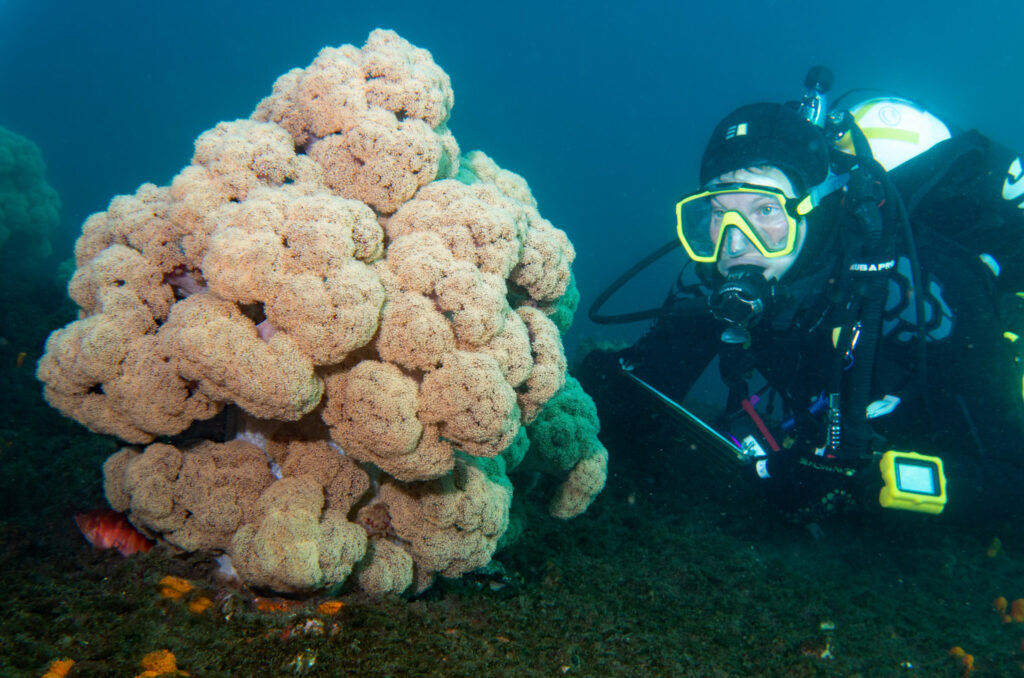This year’s Sydney surveys were a true labour of love. With all the comings and goings of busy people, we managed to squeeze in 43 surveys across 21 sites - and it only took us 6 months!
Our first surveys of the year were in January at Bare Island in Botany Bay, where we recorded substantial changes after three straight La Nina years. Some transects which had been urchin barrens in the past with a couple of hundred long-spine urchins (Centrostephanus rodgersii) usually recorded were now showing low numbers, and even zero on shallow transects. Other urchin species such as the short-spine urchin (Heliocidaris erythrogramma) and the Eastern slate-pencil urchin (Phyllacanthus parvispinus) were severely depleted too. We should note that while Centrostephanus rodgersii is well known for its destructive impacts in Tasmania where RLS HQ is based, this species is native to Australia's south-eastern mainland, playing an important role on the rocky reef ecosystems of NSW.
Unfortunately, kelp was largely gone in the shallows, replaced by fuzzy brown algae, and mollusc numbers were also down.

The story was better deeper, as much of the impact we saw is thought to be from heavy rainfall producing large volumes of fresh water that sits on top of the sea water. Once we took the NSW URG (Underwater Research Group) boat to Sydney Harbour, where we could get to the more flushed and deeper sites, we saw less change and plenty of the usual suspects on transect. The most abundant fishes were eastern hula fish (Trachinops taeniatus), eastern mado (Atypichthys strigatus) and yellowtail scad (Trachurus novaezelandiae). Despite the impacts to our shallow transects, overall the most abundant invertebrates were still long-spine urchins, followed by tent turbans (Astralium tentoriiforme). Overall we recorded 148 fish species and 43 invertebrate species thanks to the persistent efforts of our 6 local RLSers - Josh Moloney, Kris O’Keeffe, Josh Batchelor, Lou de Beuzeville, Nyrie Palmer and yours truly.
We had a few unusual sightings too, most notably the orange-spotted sleeper goby (Valenciennea puellaris) at Camp Cove, previously recorded only in the GBR and further north, and the paddletail snapper (Lutjanus gibbus), also a tropical species. Generally however tropical vagrants were lower than usual. At the time of writing, there was a notable boom of sea lamington urchins underway (Tripneustes sp., as pictured below). On the mainland opposite Bare Island, for example, we recorded 28 Tripneustes australiae (the proposed new name of T. kermadecensis, previously thought to be the same species T. gratilla) and four T. gratilla (now known to be a tropical species) on one transect. Due to interest in the boom-bust process among Tripneustes species by scientists at the University of Sydney, we will continue to survey the Tripneustes sites over coming months.

Overall it was a terrific survey period, with great energy and commitment by all our volunteers. We’re fascinated to be documenting the impacts of extreme weather events on our survey sites as well as their subsequent recovery, all as part of our regular survey program. Right now the water is cool (around 16 degrees Celsius) but clear, with visibility around 15 m, so we’re planning more surveys… this weekend!






